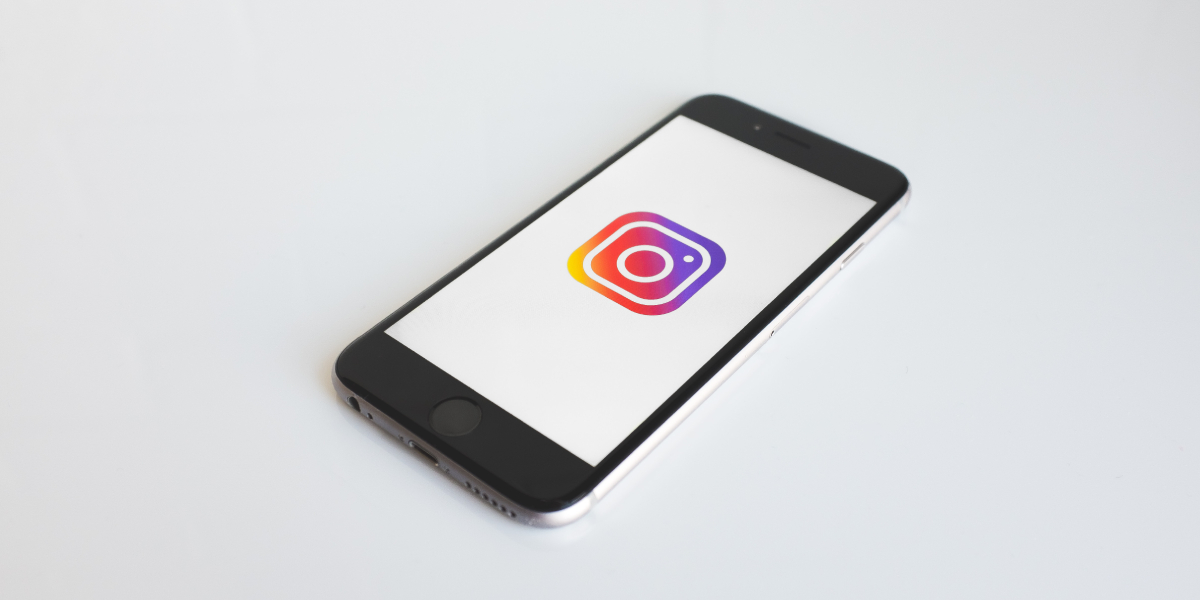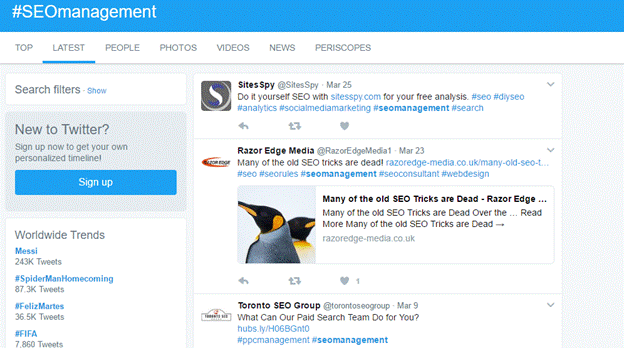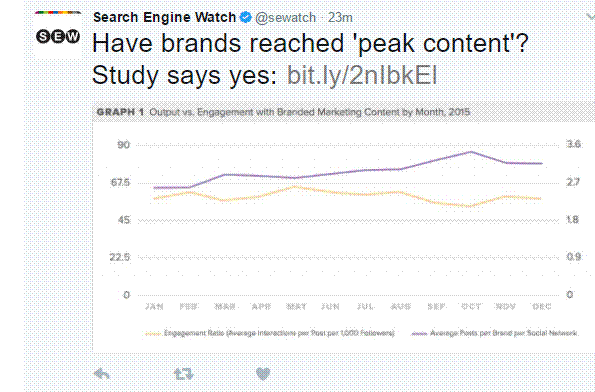Digital Marketing
Unlocking The Secrets: How To Make Your Instagram Profile Go Viral
Published
10 months agoon
By
admin
Instagram has transformed from a photo-sharing app into one of the most powerful social media platforms for branding, marketing, and engagement. With over 1 billion monthly active users, Instagram has become a hotspot for influencers, businesses, and individuals seeking to capture a massive audience. Going viral on Instagram can lead to exponential growth in followers, brand recognition, and even monetization. But what does it take to make your Instagram profile go viral? What are the strategies, secrets, and best practices that can propel you into the spotlight?
In this comprehensive guide, we’ll dive deep into the tactics, principles, and nuances of going viral on Instagram. Whether you’re a budding influencer, a brand looking to increase visibility, or just someone who wants to reach a broader audience, this guide will help you unlock the secrets of Instagram virality.
1.Understanding What It Means to “Go Viral” on Instagram
Before we dive into specific strategies, it’s essential to understand what “going viral” on Instagram means. Going viral generally refers to a post (photo, video, or story) that gains widespread attention in a short period. It could be a meme, a striking image, an inspiring video, or a trendsetting reel that gets shared, liked, and commented on far beyond your usual reach.
Virality Metrics:
- Engagement: A viral post will typically see a high engagement rate, with numerous likes, comments, shares, and saves.
- Reach and Impressions: The post will attract attention outside of your usual audience, appearing on the Explore page or being shared across other social media platforms.
- Follower Growth: A viral post often leads to a rapid increase in followers, helping you build a larger, more engaged audience.
- Shares: If users share your post via Instagram’s “Send to” feature, it can spread quickly, especially if shared by influential accounts.
To go viral on Instagram, you need a combination of timing, creativity, and strategy, but most importantly, you need to post content that resonates with people enough for them to share it.
2.Optimizing Your Instagram Profile for Virality
Your Instagram profile is the first impression users get of your content. To maximize the chances of going viral, your profile must be optimized to encourage new visitors to follow, engage, and share your content.
Bio Optimization:
Your bio is your opportunity to tell new followers who you are and what you offer. A well-crafted bio should be clear, concise, and impactful.
- Use Keywords: Use relevant keywords in your bio to increase your visibility in search results. For example, if you are a fitness influencer, words like “fitness,” “wellness,” or “training” should appear in your bio.
- Call to Action (CTA): Include a clear call to action. Whether it’s directing people to your website, asking them to follow you, or engaging with your content, CTAs can guide visitors on what to do next.
- Contact Information: Make it easy for brands and followers to reach out. If you’re an influencer or business, ensure that your email, website link, or other contact details are easily accessible.
- Profile Picture: Your profile picture should be visually appealing and consistent with your brand. Use a clear, high-resolution image that represents you or your brand.
Consistency in Aesthetic and Branding:
- Consistent Theme and Aesthetic: Viral Instagram profiles often have a cohesive visual theme or aesthetic. Whether it’s a color scheme, a style of editing, or specific subject matter, consistency helps establish your identity and makes your content recognizable.
- High-Quality Content: Quality is key. Grainy, poorly-lit photos or videos will not resonate with users or encourage shares. Invest time in learning basic photography, videography, and editing skills to ensure that your posts look professional.
- Username and Handle: Choose a username that is memorable, easy to spell, and reflective of your brand. This will help new followers find and tag you more easily.
Your profile serves as your digital storefront, and the more attractive and clear it is, the more likely users will explore your content and follow you.
3.Crafting Content That Goes Viral
The heart of going viral on Instagram lies in the content itself. To create viral content, you need to understand what resonates with your audience, why people share content, and what emotional triggers cause people to engage.
Creating Relatable and Shareable Content:
Viral content often taps into shared emotions, experiences, or trends. Whether it’s humor, inspiration, or education, your content should resonate with your target audience on a deeper level.
- Emotional Appeal: Content that evokes strong emotions, whether joy, sadness, awe, or even humor, tends to get shared more. People often share content because it makes them feel something or because they think others will feel the same way.
- Trends and Challenges: Viral trends and challenges are often shared widely. Stay on top of trending topics and Instagram challenges, and create content that aligns with these trends in a unique or creative way.
- Storytelling: Humans are naturally drawn to stories. If you can weave a compelling story into your post, whether it’s a personal journey, a behind-the-scenes look, or a transformation, people will be more likely to share it.
- Inspirational Content: Posts that inspire others—whether it’s through motivational quotes, success stories, or positive affirmations—often gain viral traction. Inspiration gives people a reason to share with their own followers.
- Humor and Memes: Memes and humorous posts have a higher chance of being shared because they are often light-hearted, relatable, and highly engaging. The key is to create content that is witty, timely, and aligned with your brand voice.
Utilizing Video and Reels:
Instagram has shifted towards video content, especially with the introduction of Reels. Reels are short, engaging, and tend to receive more exposure through Instagram’s algorithm.
- Short-Form Videos (Reels): Instagram’s Reels feature gives users the chance to create viral content in a TikTok-style format. Reels are prioritized on Instagram’s Explore page and often have a wider organic reach than photos.
- Use Trending Music: Incorporate trending sounds and music into your Reels. The Instagram algorithm favors content that uses popular sounds, increasing the likelihood that your Reel will be featured on the Explore page.
- Keep It Snappy: Attention spans are short on social media. Keep your videos and Reels quick, engaging, and to the point. A fast-paced, well-edited video is more likely to hold the viewer’s attention and encourage sharing.
By focusing on content that people connect with emotionally, and using video and Reels strategically, you can significantly increase your chances of going viral.
4.Leveraging Hashtags to Boost Visibility
Hashtags are one of the most effective ways to increase the reach of your posts and get them in front of new eyes. When used strategically, hashtags can boost the visibility of your content and push it toward a viral trajectory.
Research and Use Relevant Hashtags:
- Niche Hashtags: While it might be tempting to use broad hashtags like #love or #fashion, it’s often more effective to use niche hashtags that directly relate to your content and audience. Niche hashtags help you reach a more targeted audience.
- Trending Hashtags: Take advantage of trending hashtags that are relevant to your content. Instagram’s Explore page often features trending hashtags, which can give your content a viral boost if used appropriately.
- Hashtag Mix: Use a combination of popular, moderately popular, and niche hashtags in your posts. Popular hashtags can help you reach a broader audience, while niche hashtags ensure that you connect with a more engaged, specific audience.
- Branded Hashtags: Create your own branded hashtag and encourage your followers to use it. This not only increases engagement but also creates a community around your content.
Optimal Hashtag Use:
- Number of Hashtags: Instagram allows up to 30 hashtags per post, but research suggests that the optimal number of hashtags for maximum engagement is around 9-11. Use a variety of hashtags that target different audiences.
- Hashtag Placement: You can place hashtags in the caption or the first comment. The placement doesn’t affect the post’s visibility, but many users prefer to put hashtags in the first comment to keep the caption clean.
Mastering the art of hashtagging can significantly increase the visibility of your posts and make them more likely to go viral.
5.Timing is Everything: Posting at the Right Time
When and how often you post can dramatically affect how well your content performs. Posting at optimal times ensures that your content reaches the maximum number of users when they are most active.
Best Times to Post:
- Analyze Your Audience: Instagram Insights offers valuable data about when your followers are most active. Use this data to determine the best times to post. Generally, the best times to post on Instagram are between 9 AM and 11 AM and 6 PM to 9 PM.
- Time Zones Matter: If you have a global audience, consider posting at times that cater to the majority of your followers. If you’re trying to reach an international audience, stagger your posts to hit multiple time zones.
Consistency is Key:
- Post Regularly: Posting consistently helps keep your account active and engaged. Whether you post daily or several times a week, ensure that your content is high quality and relevant to your audience.
- Quality Over Quantity: While posting frequently is important, don’t sacrifice quality for quantity. A few well-crafted, high-quality posts will perform better than a large number of subpar posts.
By posting at the right times and maintaining a consistent posting schedule, you can maximize engagement and improve your chances of going viral.
6.Collaborating with Influencers and Brands
Collaborations are a powerful tool for growing your Instagram profile and going viral. Partnering with influencers, brands, or other creators can help you reach new audiences and increase your content’s visibility.
Benefits of Collaborations:
- Exposure to New Audiences: When you collaborate with others, their followers are introduced to your content. This can lead to increased engagement, followers, and viral potential.
- Social Proof: Collaborating with well-known influencers or brands can increase your credibility and encourage others to engage with your content.
- Content Variety: Collaborations can bring fresh ideas and perspectives to your content, keeping your feed dynamic and engaging.
Types of Collaborations:
- Giveaways: Partnering with influencers or brands for giveaways can generate significant engagement and attract new followers. Giveaway posts are often shared widely, increasing the chances of going viral.
- Takeovers: Instagram takeovers, where an influencer or brand temporarily takes control of your account (or vice versa), are an excellent way to cross-promote and reach new audiences.
- Sponsored Posts: Partnering with brands for sponsored content can expose your posts to a broader audience. If the brand shares your post, it can lead to increased engagement and virality.
Building relationships with influencers and brands can open doors to new opportunities and dramatically increase your chances of going viral.
7.Engagement Tactics: Building a Loyal Community
One of the most important factors in going viral is having a community that engages with your content. Instagram’s algorithm rewards posts that receive high engagement quickly. To foster this, you need to be proactive in interacting with your followers.
Encourage Engagement:
- Ask Questions: Prompt your followers to leave comments by asking questions or encouraging them to share their opinions.
- Call-to-Actions: Include strong call-to-actions (CTAs) in your captions, such as “Tag a friend who needs to see this” or “Double-tap if you agree.”
- Host Polls and Quizzes: Instagram Stories offer interactive features like polls, quizzes, and question stickers that can increase engagement and keep your audience coming back for more.
Reply to Comments and Messages:
Engaging with your followers in the comments section or DMs can build loyalty and encourage them to engage more with your content. The more engagement you receive, the higher the likelihood your post will get pushed to a broader audience.
Engage with Other Accounts:
- Comment on Popular Posts: Engaging with posts in your niche can draw attention to your profile. Leave thoughtful comments on popular posts from influencers or brands, and others may check out your profile in return.
- Be Active in Your Community: Engage with your followers and other creators in your niche by liking, commenting, and sharing their posts. This helps build a sense of community and increases the chances of your content being shared.
Fostering strong engagement is essential for building a loyal community that will help boost your content to viral status.
8.Mastering Instagram’s Algorithm
Understanding Instagram’s algorithm is critical to going viral. The algorithm determines which posts are shown on users’ feeds, the Explore page, and hashtags. To go viral, you need to align your content with the algorithm’s priorities.
Key Factors in the Instagram Algorithm:
- Engagement: Posts that receive high engagement (likes, comments, shares, and saves) are more likely to be pushed by the algorithm.
- Recency: Newer posts are more likely to be shown on the feed, so posting at optimal times is crucial.
- Relationships: Posts from accounts that users engage with frequently are prioritized on their feed.
- Content-Type Preferences: The algorithm considers the types of content users engage with the most. If a user frequently engages with Reels, they will be shown more Reels.
By creating engaging content, posting at the right times, and fostering strong relationships with your followers, you can improve your content’s chances of being pushed by the algorithm.
9.Utilizing Instagram Stories for Virality
Instagram Stories are a powerful tool for increasing engagement and going viral. Stories allow you to post content that disappears after 24 hours, encouraging followers to check your profile frequently.
Story Ideas for Engagement:
- Polls and Quizzes: Use Instagram’s interactive features to engage your followers and encourage participation.
- Behind-the-Scenes: Give your audience a sneak peek into your daily life, your work process, or the making of your content. This personal touch often resonates with followers.
- Countdowns and Announcements: Build anticipation for new posts, collaborations, or events by using the countdown sticker in Stories.
- User-Generated Content: Share content that your followers have created about you or your brand. This not only increases engagement but also builds a community around your profile.
Stories provide a more intimate way to connect with your audience and can keep them engaged between your main posts.
10.Analyzing Your Results and Adapting
After implementing various strategies, it’s crucial to track your progress and adapt based on your results. Instagram’s Insights feature provides valuable data on how your posts are performing.
Key Metrics to Analyze:
- Engagement Rate: The percentage of people who liked, commented, saved, or shared your post. High engagement indicates that your content is resonating with your audience.
- Reach and Impressions: Reach refers to the number of unique accounts that saw your post, while impressions are the total number of views your post received.
- Follower Growth: Track how many new followers you gained after posting viral content.
By consistently analyzing your results, you can refine your strategy, focusing on the types of content and posting times that yield the best results.
Conclusion
Going viral on Instagram is not an exact science, but with the right mix of creativity, strategy, and consistency, it’s entirely achievable. From optimizing your profile to leveraging the power of Reels, hashtags, and collaborations, these tips will help unlock the secrets to viral success.
Remember, virality is not just about one-off posts—it’s about building a brand, fostering engagement, and continuously adapting to Instagram’s ever-evolving ecosystem. The road to Instagram stardom requires patience, persistence, and a deep understanding of your audience’s needs and desires. Follow the strategies outlined in this guide, and you’ll be well on your way to making your Instagram profile go viral.
You may like
Digital Marketing
What Are the Most Effective Digital Marketing Strategies?
Published
3 weeks agoon
June 20, 2025By
admin
In today’s hyper-connected digital world, standing out amidst the noise is one of the biggest challenges for businesses. With more than 5 billion internet users globally, the potential reach of digital marketing has never been greater. Yet, the question remains: what are the most effective digital marketing strategies that truly drive results?
From startups to established enterprises, businesses are constantly exploring ways to maximize their online visibility, engage their audience, and boost conversions. Whether you’re a small business owner or a digital marketing professional, understanding how to leverage the right strategy can be the difference between fading into obscurity and becoming a household name.
This blog will break down everything you need to know about creating a powerful digital marketing strategy, including actionable tips and examples of successful campaigns that made waves.
What is a Digital Marketing Strategy?
A digital marketing strategy is a comprehensive plan that outlines how a business will use digital channels to achieve its marketing goals. These channels can include search engines, social media platforms, email, websites, and more. The strategy serves as a roadmap that helps businesses:
- Identify their target audience
- Set measurable objectives
- Allocate resources efficiently
- Analyze and optimize campaign performance
A successful digital marketing strategy is customer-centric, data-driven, and aligned with the overall business goals. It’s not just about being present online but about being strategically present.
4 Tips for Creating an Effective Digital Strategy
Creating an effective digital marketing strategy requires thoughtful planning and ongoing optimization. Here are four crucial tips to guide you:
1. Understand Your Customer
Everything begins with the customer. Your digital marketing strategy should revolve around understanding:
- Who your customers are
- What their needs and pain points are
- Where they spend their time online
- How they make purchasing decisions
Use tools like Google Analytics, Facebook Audience Insights, and customer surveys to gather demographic and psychographic data. Develop detailed buyer personas to humanize your audience and guide your messaging.
2. Audit & Assess
Before crafting new strategies, conduct a comprehensive audit of your current marketing efforts. Assess:
- Website performance (load speed, mobile responsiveness, user experience)
- Content quality and reach
- SEO health (backlinks, keywords, rankings)
- Social media engagement
- Email open and click-through rates
A SWOT analysis (Strengths, Weaknesses, Opportunities, Threats) is also helpful to identify where you stand and where to improve.
3. Focus on the End Result
Your strategy should be goal-oriented. Ask yourself:
- Are you trying to increase brand awareness?
- Do you want to generate more leads?
- Are you focused on boosting online sales?
Use SMART goals (Specific, Measurable, Achievable, Relevant, Time-bound) to give your campaigns a clear direction. For example: “Increase website traffic by 20% in 3 months through SEO and social media marketing.”
4. Review and Refine
Digital marketing is not a set-it-and-forget-it process. Regularly monitor KPIs such as:
- Conversion rates
- Bounce rates
- Cost-per-click (CPC)
- Return on investment (ROI)
Use analytics tools like Google Analytics, SEMrush, HubSpot, and social media insights to evaluate performance and refine your strategies accordingly.
What Are the Most Effective Digital Marketing Strategies?
Here’s a deep dive into the most effective digital marketing strategies that are driving success in 2025:
Content Marketing
Content marketing is about creating and distributing valuable, relevant, and consistent content to attract and retain a clearly defined audience.
Why it’s effective:
- Builds authority and trust
- Enhances SEO
- Generates organic traffic
- Encourages engagement
Examples:
- Blog posts
- E-books
- Infographics
- Webinars
- Case studies
Brands like HubSpot and Neil Patel have built entire empires through content marketing.
Social Media Marketing
Social media marketing leverages platforms like Facebook, Instagram, LinkedIn, and TikTok to connect with audiences, build brands, and drive website traffic.
Why it’s effective:
- Builds communities
- Encourages direct interaction
- Supports content distribution
- Provides real-time feedback
Best practices:
- Post consistently
- Use visuals and video
- Engage with comments and DMs
- Run contests or giveaways
Nike and Wendy’s are known for their engaging and witty social media presence.
SEO (Search Engine Optimization)
SEO is the practice of optimizing your website to rank higher on search engines like Google.
Why it’s effective:
- Increases visibility
- Drives targeted organic traffic
- Builds long-term ROI
Core elements of SEO:
- Keyword research
- On-page optimization
- Technical SEO
- Backlink building
Companies like Moz and Ahrefs not only teach SEO but also dominate search engine rankings.
Paid Advertising
Paid advertising involves placing ads on search engines, social media, or other platforms to drive traffic or conversions.
Types include:
- Google Ads (Search and Display)
- Facebook & Instagram Ads
- LinkedIn Sponsored Content
- YouTube Ads
Why it’s effective:
- Instant visibility
- Highly targeted
- Scalable
With the right budget and targeting, brands can quickly amplify their reach and revenue.
Influencer Marketing
Influencer marketing uses endorsements from individuals with a dedicated social following to promote products or services.
Why it’s effective:
- Builds trust and authenticity
- Reaches niche audiences
- Boosts engagement
Platforms like Instagram and TikTok are especially powerful for influencer campaigns. Brands like Fashion Nova and Gymshark have grown massively through micro and macro influencer collaborations.
Email Marketing
Email marketing remains one of the most powerful tools in the digital arsenal, offering direct access to your audience’s inbox.
Why it’s effective:
- Cost-effective
- Personalized
- Great for nurturing leads
Email types include:
- Newsletters
- Product announcements
- Abandoned cart emails
- Loyalty program promotions
Brands like Amazon and Spotify use sophisticated email segmentation and automation to engage customers at every stage of the journey.
Examples of Successful Digital Marketing Strategies
- Coca-Cola’s Share a Coke Campaign
- Customized bottles with common names led to viral social media sharing.
- Utilized user-generated content and strong personalization.
- Airbnb’s Instagram Strategy
- Used user-generated travel content to build brand credibility.
- Focused on stunning visuals and emotional storytelling.
- Dove’s Real Beauty Campaign
- Focused on emotional appeal and authenticity.
- Combined video content with social media outreach.
- Spotify Wrapped
- Personalized year-end playlists encouraged massive social sharing.
- Capitalized on data storytelling and FOMO.
- GoPro’s User-Generated Content
- Encouraged customers to share adventurous videos using GoPro cameras.
- Built a strong community and brand loyalty.
Understanding Your Digital Marketing Strategy
A great digital marketing strategy is a living document. It should evolve with your business and customer needs.
Ask yourself regularly:
- Are your channels performing?
- Are you reaching the right audience?
- What’s working and what’s not?
Use A/B testing, heat maps, and analytics dashboards to continually improve. Integrate CRM systems and marketing automation tools to streamline your efforts and track every interaction.
Become a Strategic Digital Marketer
To be a strategic digital marketer in 2025, you must:
- Think holistically: Integrate various strategies to create a seamless customer experience.
- Stay updated: Digital trends evolve quickly. Subscribe to industry blogs, attend webinars, and take courses.
- Measure everything: Data is your compass. Make decisions based on insights, not assumptions.
- Test and learn: Embrace experimentation. Every failure is a learning opportunity.
Remember, the most effective strategy is the one that aligns with your audience, your goals, and your brand.
Final Thoughts
The digital landscape is dynamic, but with the right strategies, you can navigate it successfully. Whether you’re relying on SEO, content marketing, paid ads, or social media, always put your customer first and measure your success continuously.
Now that you understand what the most effective digital marketing strategies are, it’s time to build your own customized roadmap. Stay curious, be bold, and don’t be afraid to pivot when needed. Success in digital marketing isn’t about following trends—it’s about mastering strategy.
Digital Marketing
10 Tips for Optimizing Images for SEO
Published
3 months agoon
April 23, 2025By
admin
In the realm of digital marketing and search engine optimization (SEO), images play a crucial role in enhancing user experience, conveying information, and driving traffic to your website. However, simply adding images to your web pages is not enough; optimizing them for search engines is equally important. Image optimization can significantly impact your website’s visibility in search engine results pages (SERPs) and overall SEO performance. In this article, we’ll explore ten essential tips for optimizing images to improve your website’s SEO.
1.Choose the Right Image Format:
Selecting the appropriate image format is the first step in image optimization. The most common image formats for the web are JPEG, PNG, and GIF. JPEG is suitable for photographs and complex images with many colors, while PNG is ideal for images with transparent backgrounds or crisp edges, such as logos or icons. GIFs are best for animations. By choosing the right format, you can ensure that your images are visually appealing and load quickly, which is crucial for SEO.
2.Optimize Image Size and Compression:
Large image files can slow down your website’s loading speed, negatively impacting user experience and SEO. Therefore, it’s essential to resize and compress your images without compromising their quality. Tools like Adobe Photoshop, GIMP, or online services like TinyPNG and JPEG Optimizer can help you reduce image file sizes while maintaining visual integrity. Aim for a balance between image quality and file size to improve page loading times and SEO performance.
3.Use Descriptive File Names:
When saving images for the web, avoid generic file names like “image123.jpg” or “photo1.png.” Instead, use descriptive, keyword-rich file names that accurately reflect the content of the image. For example, if you’re uploading a picture of a beach sunset, a file name like “beach-sunset.jpg” is more informative and SEO-friendly. Descriptive file names not only help search engines understand your image content but also improve accessibility for visually impaired users who rely on screen readers.
4.Utilize Alt Text:
Alt text, short for alternative text, is a crucial element of image SEO. It provides a textual description of an image, which is displayed if the image fails to load or for users who rely on screen readers. Including relevant keywords in your alt text can improve your image’s visibility in image search results and contribute to your overall SEO efforts. However, avoid keyword stuffing and ensure that your alt text accurately describes the image content for a better user experience.
5.Write Informative Image Captions:
Image captions are another opportunity to optimize your images for SEO. Captions provide additional context and relevance to your images, enhancing both user experience and search engine visibility. When writing image captions, be concise yet descriptive, and include relevant keywords where appropriate. Captions can also encourage users to engage with your content and improve dwell time on your website, which are positive signals for SEO.
6.Implement Image Structured Data:
Structured data, also known as schema markup, helps search engines understand the content and context of your web pages, including images. By implementing image structured data, you can provide search engines with additional information about your images, such as the subject, location, or author. This can improve the likelihood of your images appearing in rich snippets or image carousels in search results, enhancing visibility and click-through rates.
7.Optimize Image Titles and Headings:
In addition to alt text and captions, optimize the titles and headings associated with your images for SEO. Use descriptive, keyword-rich titles and headings that accurately reflect the image content and context within the surrounding text. Incorporating relevant keywords in your image titles and headings can improve the overall relevance and authority of your web pages, leading to higher rankings in search results.
8.Consider Image Placement and Context:
The placement and context of your images within your web pages can impact their SEO effectiveness. Ensure that your images are strategically placed within relevant content sections to enhance user engagement and comprehension. Use images to break up large blocks of text, illustrate key points, and enhance the overall visual appeal of your content. By integrating images seamlessly into your web pages, you can improve user experience and SEO performance.
9.Opt for Responsive Images:
With the increasing prevalence of mobile devices, it’s essential to optimize your images for various screen sizes and resolutions. Responsive images adapt dynamically to different devices and screen sizes, ensuring optimal display and performance across all platforms. Implementing responsive image techniques, such as srcset attributes and CSS media queries, can improve user experience, reduce bounce rates, and boost your website’s mobile SEO rankings.
10.Monitor Image Performance and Iterate:
Finally, regularly monitor the performance of your images using web analytics tools and SEO metrics. Pay attention to metrics such as image impressions, clicks, and engagement rates to assess the effectiveness of your image optimization efforts. Use A/B testing and experimentation to refine your image optimization strategies and identify opportunities for improvement. By continuously iterating and optimizing your images, you can enhance their impact on SEO and drive better results for your website.
Conclusion:
Optimizing images for SEO is a critical aspect of modern digital marketing and website optimization. By following the ten tips outlined in this article, you can improve your website’s visibility in search engine results, enhance user experience, and drive organic traffic. From choosing the right image format to implementing structured data and monitoring performance, every aspect of image optimization plays a vital role in your overall SEO strategy. By prioritizing image optimization, you can unlock new opportunities for growth and success in the competitive online landscape.
Business
Tweet Your Way Towards Better Dental Marketing Results
Published
3 months agoon
April 22, 2025By
admin
As one of the leading social networking sites nowadays, Twitter is a good way to promote a business. Engagements and search results can be easily achieved. Through a 140-character content, you have the power to expand your business.
Retweets and Likes are mostly the forms of promotions that Twitter uses. But because Twitter uses a different method of curating the content, there is a possibility that new tweets will cover up the tweets, tweeted just minutes ago.
So, as proven time and again, Twitter is a great tool for promoting. But it isn’t a genie’s lamp that would grant you wishes for faster marketing success. Instead, it needs to have great content that is relevant to your audience.
How to use Twitter for your Dental Campaign
Social media is a great way to grow your practice with dental marketing ideas, especially if you’re looking for dental patients. Twitter in particular is a good platform to start with, as it allows you to connect and communicate with your audience in the most direct and effective way.
There are many benefits to using twitter for your dental marketing even if you are not a “techie” or a “geek”.
Here are some of them:
- Twitter provides a fast and effective way to communicate with your target audience.
- You can interact with people who might not know who you are yet. You can build relationships with potential clients.
- Twitter can help you find new customers. Use hashtags to get known by new customers who might be looking for someone exactly like you.
- Twitter helps you stay relevant and up-to-date on current trends and news affecting your industry. You can share important information regarding dental health, dentists, procedures and products with your followers.
- Twitter gives you credibility as an expert by sharing your knowledge and experience with other dental practitioners, patients and potential clients.
Twitter might be a little bird that only allows 140 characters, but if you know how to maximize its use, then you’ll expect better results.
Here are some the tips on using Twitter for your marketing strategy:
Know How to Use the Search Option Properly

A lot of Twitter users don’t know how the search options work and how to properly use the search operators to accurately get the results that they need.
Most people just randomly type keywords in the search box, but what they did not know is that Twitter will only search tweets that have all those words. The results usually show unrelated tweets, to what you intend to find.
However, to obtain better results, users should use the search operator or in between the two keywords that they are searching. And if they are using phrases to search something, it is better to use “” for better results.
From Pinned Tweet to Feature Box
Feature Box is like a lead magnet of your page that allows visitors to add to your email list – it is a form that is on the top of your homepage. You can turn your pinned tweet into a feature box by using lead generation cards and a pinned tweet.
You can create this by only making a Lead Generation Card that includes rewards for people who use or answer the form then pin the tweet to your Twitter profile, then there you have it!
This tool will come in handy in the future when you use it with other marketing tools, and you can directly download your email list with this also.
Tweet the Same Content Many Times but Tweak it a Little
The downside that Twitter has a lot of users is that recent tweets immediately are covered by other tweets. And it results in previous tweets being neglected and becomes useless.
What you can do to maximize the tweeting process to promote this is to tweet the same content a lot of times. Don’t be afraid to do it, because sometimes your second tweet will work better than your first one.
However, even if it is a good idea to tweet the same tweet a couple of times, making the text and image different each time you tweet has a higher risk of receiving tons of interest and engagement. With this also, you can check the analytics of the type of tweets and contents works well.


Your Tweets Should Look Good
Links can be a great help for contents but having long tweets can limit the character count of your tweet. Instead of tweeting the whole link, you can maximize link shorteners. With this, it also makes your tweets neater.

As Twitter keeps on changing, adding videos and images can make a great difference as well because they make your tweets more attractive instead of having dull tweets. Engagements are usually high with this kind of tweets.
Your displayed photo and header should match the business that you have. Make sure that the pictures that you are going to use have high resolutions and fits with the standard sizes that twitter has.
Even your profile bio should be presentable as it is the first thing after your picture that a visitor will look at. Make it short and exciting, like phrases that describe your business or page.
Create a Proper Tweeting Schedule
It may sound so vain, but there are appropriate hours where the engagement is higher compared to other hours of the day. You should properly study the perfect timing, and make scheduled tweets to increase awareness and engagement for your tweets. This way, a lot will be aware of your business.
Takeaway
As social media marketers, using influencer marketing enables us to learn new strategies about social media and how to connect and achieve more engagements. Knowing Twitter’s basics and setting up a profile can help you understand the advances.

The Ultimate Guide to the Best Android Strategy Games in 2025: What to Play and Why

What Are the Most Effective Digital Marketing Strategies?

Everything You Need to Know About Windows 11

The Best E commerce Platforms for Small Businesses in 2025

How to Start Coding from Zero Level with No Prior Experience

Why Great Output Doesn’t Always Mean Great Performance

Top 3 Advanced Persistent Threats and How Businesses Can Stop their Attacks

14 Actionable Tips to Improve Your Manufacturing Business

10 Tips for Optimizing Images for SEO

10 Most Profitable Businesses in India
Trending
-

 Miscellaneous3 years ago
Miscellaneous3 years agoSubnautica Below Zero Map – Know About Complete World Map and Coordinates 2021
-

 Mobile2 years ago
Mobile2 years agoVivo Company Belongs to Which Country? Vivo Made in Which Country? Is Vivo Chinese Company?
-

 Gaming2 years ago
Gaming2 years agoWhen Did the PS4 Come Out
-

 Gaming3 years ago
Gaming3 years agoWhy F95 Zone is the Leading Gaming Community?

